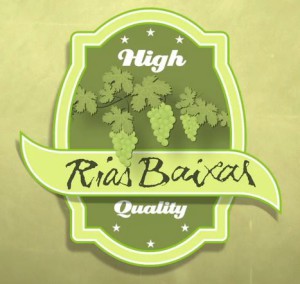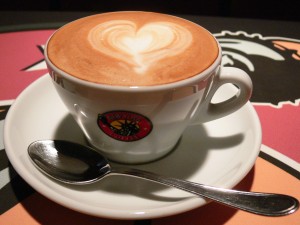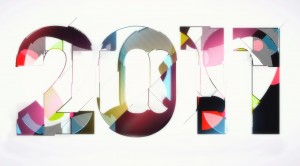 A week or so ago we had our annual Albariño Festival a few km from our cellar in the local town of Cambados. As some of you may already know from previous posts I have a sort of love/hate relationship with the festival, as there are parts of it I like, and parts where I think we have lost our way a bit. I will explain…..
A week or so ago we had our annual Albariño Festival a few km from our cellar in the local town of Cambados. As some of you may already know from previous posts I have a sort of love/hate relationship with the festival, as there are parts of it I like, and parts where I think we have lost our way a bit. I will explain…..
Of course the idea of any festival is to celebrate something – in this case our fantastic wines. We invite visitors, not only from our own region, but from around the world to come and taste our wines. Indeed, we have even added a ‘Taste Tunnel’ where people can buy a ticket to pass through and sample many of the best wines of the region, in an organised and civilised fashion. For me, I believe that this is the way that it should be done – an opportunity to taste, and to get to know the wines of Rias Baixas. During the day and early evening the festival retains this calm, orderly atmosphere, where visitors stroll around and enjoy an odd glass of wine or two – a great advertisement for our region.
However, after dark and during the night, the atmosphere changes, where to be honest our celebration becomes more of a drunken ‘free-for-all’, or perhaps an organised botellon (as I have described it in the past). Selling huge amounts of wine to young people might be considered a good way of moving a bit of stock, but does it really send out the right signals? In other countries they try to promote the consumption of alcohol ‘in moderation’, often with health warnings printed on the bottles – here it would appear, that as a region, we are quite simply endorsing the abuse of alcohol. It is after all, an ‘official’ festival. It is for this reason alone that we have chosen not to take a booth at the fair for the last four or five years.
Certainly, I do not wish to be seen as a ‘killjoy’, to stop young people having fun, but it is just that in my opinion any serious wine tasting festival should at least be seen to distance itself from encouraging drunken behavior…..
If the official statistics for the festival to be believed, this might give you a clearer picture. It is claimed that over a 4 day period (bearing in mind that there is very little activity during the day, and that some booths do not even open), some 85,000 bottles of albariño were consumed. More than 7,000 twelve bottle cases, or the equivalent of more than 4½ 40ft containers of wine. In the small seaside town of Cambados, that is an awful lot of wine to sell in just 4 days, and perhaps not a statistic to be proud of?
 A week or so ago we had our annual Albariño Festival a few km from our cellar in the local town of Cambados. As some of you may already know from previous posts I have a sort of love/hate relationship with the festival, as there are parts of it I like, and parts where I think we have lost our way a bit. I will explain…..
A week or so ago we had our annual Albariño Festival a few km from our cellar in the local town of Cambados. As some of you may already know from previous posts I have a sort of love/hate relationship with the festival, as there are parts of it I like, and parts where I think we have lost our way a bit. I will explain…..
Of course the idea of any festival is to celebrate something – in this case our fantastic wines. We invite visitors, not only from our own region, but from around the world to come and taste our wines. Indeed, we have even added a ‘Taste Tunnel’ where people can buy a ticket to pass through and sample many of the best wines of the region, in an organised and civilised fashion. For me, I believe that this is the way that it should be done – an opportunity to taste, and to get to know the wines of Rias Baixas. During the day and early evening the festival retains this calm, orderly atmosphere, where visitors stroll around and enjoy an odd glass of wine or two – a great advertisement for our region.
However, after dark and during the night, the atmosphere changes, where to be honest our celebration becomes more of a drunken ‘free-for-all’, or perhaps an organised botellon (as I have described it in the past). Selling huge amounts of wine to young people might be considered a good way of moving a bit of stock, but does it really send out the right signals? In other countries they try to promote the consumption of alcohol ‘in moderation’, often with health warnings printed on the bottles – here it would appear, that as a region, we are quite simply endorsing the abuse of alcohol. It is after all, an ‘official’ festival. It is for this reason alone that we have chosen not to take a booth at the fair for the last four or five years.
Certainly, I do not wish to be seen as a ‘killjoy’, to stop young people having fun, but it is just that in my opinion any serious wine tasting festival should at least be seen to distance itself from encouraging drunken behavior…..
If the official statistics for the festival to be believed, this might give you a clearer picture. It is claimed that over a 4 day period (bearing in mind that there is very little activity during the day, and that some booths do not even open), some 85,000 bottles of albariño were consumed. More than 7,000 twelve bottle cases, or the equivalent of more than 4½ 40ft containers of wine. In the small seaside town of Cambados, that is an awful lot of wine to sell in just 4 days, and perhaps not a statistic to be proud of?
 Our local D.O. office has just commissioned this short cartoon/video which is very nicely done – condensing our region’s wine making process into a brief story of only 2 minutes and 45 seconds (if only the real process were so simple). The only downside is that, at the moment, it is only available in Spanish, and so in the coming days I will try to find out if they are going to make an English version. The simple visuals might help you, even if you don’t speaka da lingo perfectimundo….. like what I do!
Our local D.O. office has just commissioned this short cartoon/video which is very nicely done – condensing our region’s wine making process into a brief story of only 2 minutes and 45 seconds (if only the real process were so simple). The only downside is that, at the moment, it is only available in Spanish, and so in the coming days I will try to find out if they are going to make an English version. The simple visuals might help you, even if you don’t speaka da lingo perfectimundo….. like what I do! Our local D.O. office has just commissioned this short cartoon/video which is very nicely done – condensing our region’s wine making process into a brief story of only 2 minutes and 45 seconds (if only the real process were so simple). The only downside is that, at the moment, it is only available in Spanish, and so in the coming days I will try to find out if they are going to make an English version. The simple visuals might help you, even if you don’t speaka da lingo perfectimundo….. like what I do!
Our local D.O. office has just commissioned this short cartoon/video which is very nicely done – condensing our region’s wine making process into a brief story of only 2 minutes and 45 seconds (if only the real process were so simple). The only downside is that, at the moment, it is only available in Spanish, and so in the coming days I will try to find out if they are going to make an English version. The simple visuals might help you, even if you don’t speaka da lingo perfectimundo….. like what I do!











